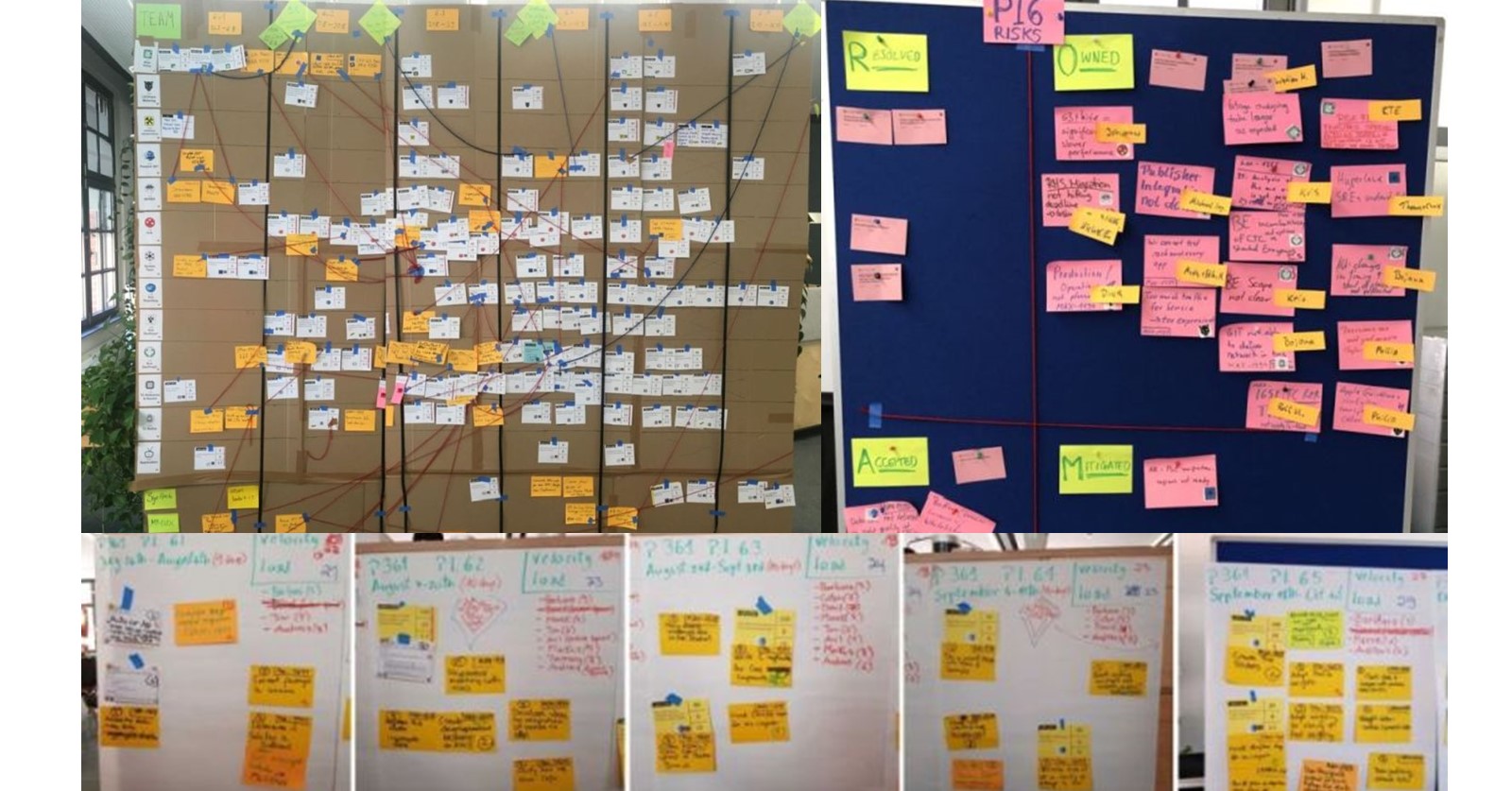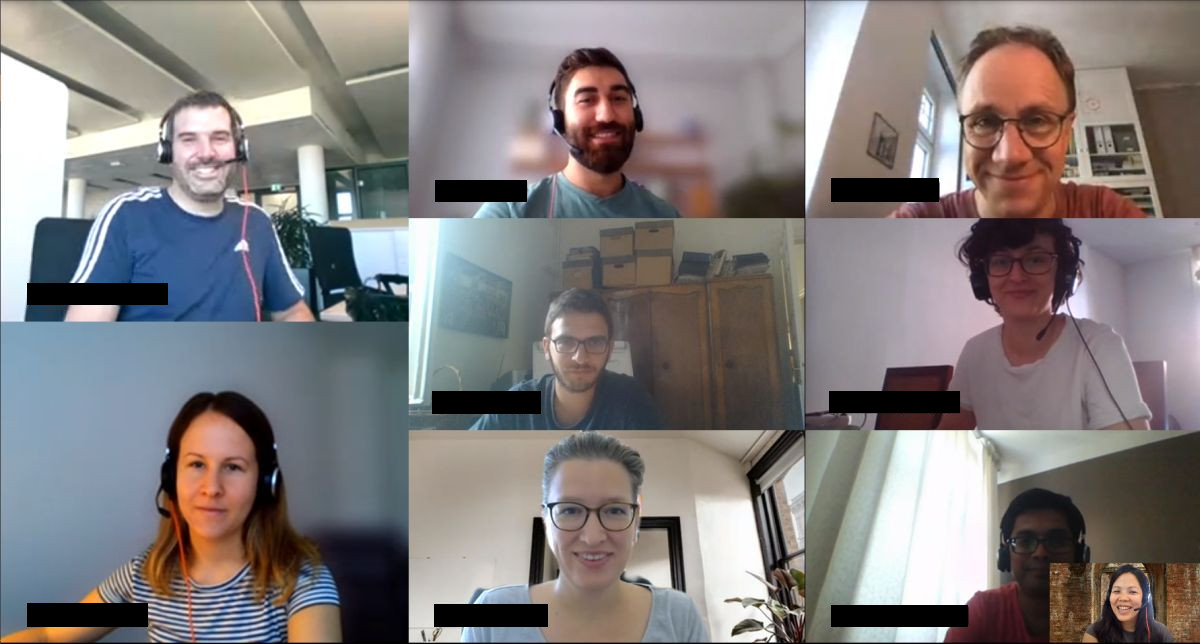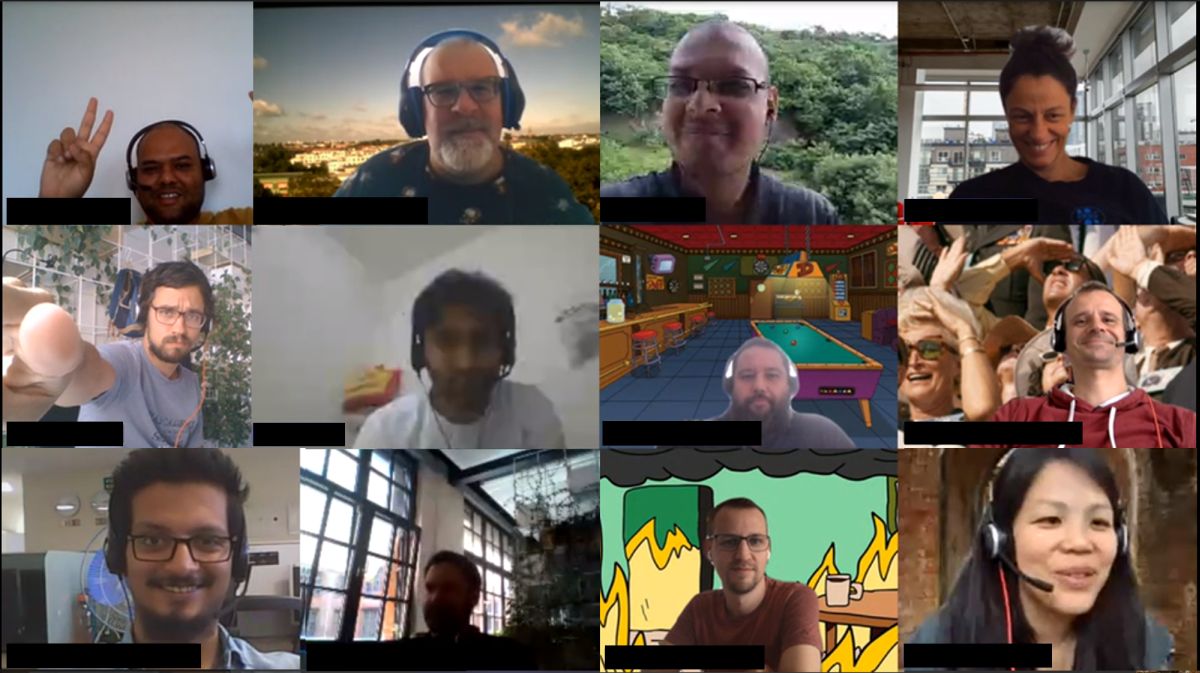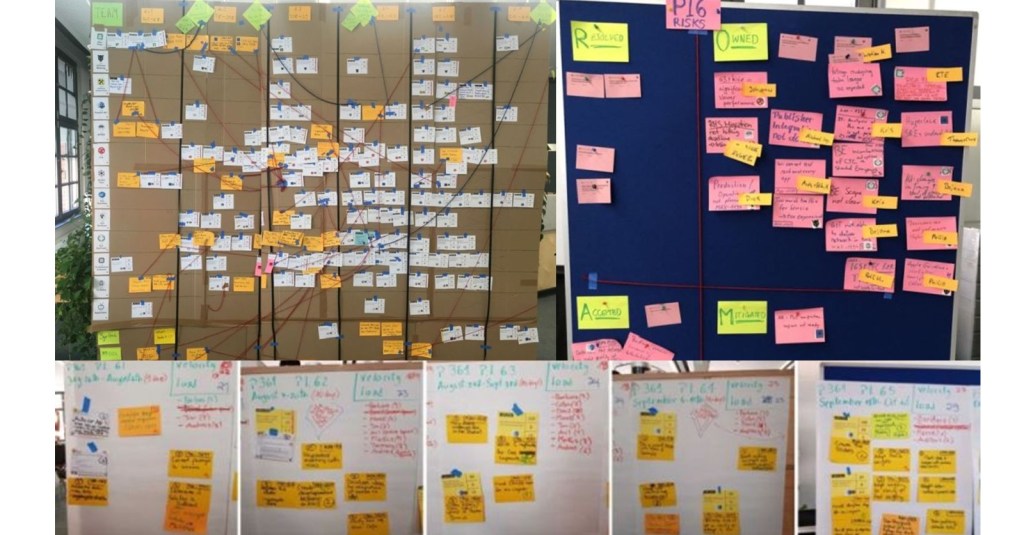The rise in distributed teams should be triggering a remote-first approach in how teams communicate and collaborate. This phenomenon would mirror how the rise of affordable sophisticated smartphones has triggered a mobile-first approach to designing websites. Similarly to how the design of websites for optimal usability on mobile browsers needed to be built-in from the beginning, team communication and collaboration (including the need for informal social exchange) should have been engineered to give remote team members an optimal experience.
In Media Measurement, we were already accustomed to online meetings and had experimented with distributed or semi-remote larger planning events. As COVID-19 lockdown forced most of us to become remote workers for an extended period, it became evident that we were not always thinking remote-first.
Teams prior to COVID-19 lockdown
In Media Measurement, we have 14 teams spread across multiple locations. Prior to COVID-19, most of these 14 teams were distributed, so they were already accustomed to having their Scrum ceremonies and communicating online. Such online meetings were held via Slack or Skype for Business (and eventually Teams after it was rolled out). Few teams, however, turned on their video in these online meetings. Most teams were using Slack for online messaging and their own team Slack channel. Jira was used for managing daily work and Confluence for documenting any knowledge that needed to be persisted to larger audiences.
Also, since we practice SAFe in Media Measurement, we are essentially one large distributed team of teams. We would meet every 2-to-3 months in Nuremberg or Berlin for a PI Planning to plan work for the next 4-to-5 sprints. These on-site 2-day planning events produced physical artifacts created with cardboard, paper cards, post-its, yarn, tape and flipcharts, e.g. a program board showing all features and dependencies that were planned in, a risk board and individual team draft plans.

Typically, all this information is digitalized—photos of the program board were shared on Confluence, risks made it into the respective Jira board and teams added high-level stories to their Jira backlogs. Prior to COVID-19, we had also experimented with having a distributed PI Planning with several geographical hubs where local teams and their respective stakeholders co-located, as well as a partially-remote PI Planning where only one team was not on-site with the rest of the teams. One of the first things for the distributed event was to use a digital program board that was actively updated during the event.
What changed after COVID-19 in our distributed teams
As a Scrum Master for two distributed teams (let’s call them Team A and Team B), I felt that my teams were well-equipped to handle the sudden Working from Home situation. Our meetings were still online, and we didn’t rely on physical artifacts to capture and persist information. But after we suddenly were all in Home Office, those of us who typically would see each other in the office anymore realized that we were missing something. We started doing virtual coffee breaks regularly and having non-work Slack channels in addition to the multiple Slack channels that already existed for team-internal and cross-team communication and special work topics. The need for online socializing with my team members only became apparent to me once I also became a full-time remote worker.
Team A also shifted quickly to Microsoft Teams for online meetings and although many members did turn video on before COVID-19, I noticed that all members automatically turned their video on (of course this might have also been due to the fun factor of choosing your own background in Teams). Another more interesting phenomenon that seemed to happen is that communication became more explicitly online and inclusive for remote members that had previously given feedback that they felt like they were not always in the communication loop regarding work-related topics. As one team member pointed out, this seemed to improve our team spirit, because it didn’t matter anymore which location you worked at.

Team A in an online meeting
Team B had tested turning video on in our daily stand-up meetings before COVID-19, but 60% still preferred having their video turned off. The majority of the team had seen each other regularly in the Berlin office and turning video on was often seen as an unnecessary hassle. Recently, Team B started turning video on Fridays in their daily stand-up meetings, and the smiles, reactions and ensuing jokes speak for themselves. Also, despite being loyal Slack users, Team B has shifted their Internal Knowledge Cafe sessions and some ad-hoc discussions to Microsoft Teams so that they could be easily recorded.
What surprised me about this team is that despite being very active users in our multiple Slack channels, they now also regularly use the additional non-work Slack channel. While this type of communication did happen on occasion in our main team Slack channel, the creation of this new channel led to an increase in online socializing that all team members could be part of.

Team B in an online meeting
When I asked my fellow Scrum Masters in Media Measurement if anything had changed in how their teams communication or collaborated online, virtually all of them said yes. Some of their distributed teams also experienced that remote workers felt more included in team communication, since informal chats between co-located members during coffee breaks or smoke breaks were now happening online.
Online communication started to include greetings like “Good Morning” at the start of the day, “I’m out for lunch now” when they took their lunch breaks and “Have a nice evening” when they stopped working. Another distributed team started having virtual team lunches. Many teams (including teams that are co-located when they are not working from home) started turning their video on or used video more regularly in online meetings.
What changed after COVID-19 in PI plannings
Although we already had tooling in place to support our large distributed team of teams in Media Measurement and had partially moved to digitalized artifacts for our distributed PI Planning experiment, there seemed to be a big push to fully digitalize all artifacts and find the right set of tools for our first all-remote PI Planning event:
- Our meetings (both large room sessions and team breakouts) happened online within Microsoft Teams with many participants choosing to turn their video on.
- Our program board became a virtual program board in Miro.
- We directly entered risks in a Jira board.
- Most teams created their draft plans directly in Jira sprints while some opted for Confluence.
The feedback we received from participants after our first all-remote PI Planning speak for themselves. 63% had moderate, poor or terrible expectations of our first all-remote planning event, however, 73% found the event good or even delightful.
I believe these results reflect the perception that good remote team collaboration and communication is difficult to achieve. This is possibly also why we hesitate to think remote-first, but I also think that if we give it a shot, we can be pleasantly surprised, as was also the case in our all-remote PI Planning. We greatly exceeded expectations.
We also discovered added benefits from having digitalized living artifacts that were available to all remote participants during and immediately after the PI Planning. As one Scrum Master pointed out, we saved time on digitalizing these artifacts after the planning event. In my teams, we also appreciated this saved time and effort. Also, some of our more remote members (who usually do not join the planning events) could easily take part.
Still, feedback from our 1st remote PI Planning indicate that despite the positive responses, many missed the face-to-face informal conversations and opportunities to socialize. This need for online socializing was also present with the Scrum Teams after COVID-19.
In our 2nd remote PI Planning, we gave the virtual social “evening” event more of an event character with fun group quizzes. However, feedback to this event indicate that more opportunities for ad-hoc socializing would still be welcome (especially with people outside of one’s own SCRUM team).
Thinking remote-first due to COVID-19
What all these changes have in common is that they are all beneficial to remote team members but can also have benefits for all team members. Improving tools for online collaboration, greater use of video, offering more ways to socialize online together can lead to greater harmony within distributed teams and saved time and effort in radiating information to all team members.
Thinking remote-first due to COVID-19 helped us focus on making sure remote team members are not greatly disadvantaged, because we were suddenly all remote team members. The changes that we experienced in Media Measurement in how we interacted with each other within our Scrum teams and larger team of teams indicate that the needs of remote team members were not our first priority.
While the remote-first approach is nothing new (all-remote companies like GitLab) have fully embraced this idea), traditional companies that have an increasing number of distributed teams need to take some notes. This is not a call for us to move away from face-to-face interactions towards all-remote meetings, however, when the distributed nature of our teams is inevitable, then we should put greater efforts into creating an inclusive and enabling environment for all team members to thrive in.
As we slowly return to working from the office, I would encourage us all to scrutinize whether the way that we work and communicate together can be improved for any remote team members.
How are your distributed teams thinking remote-first?




